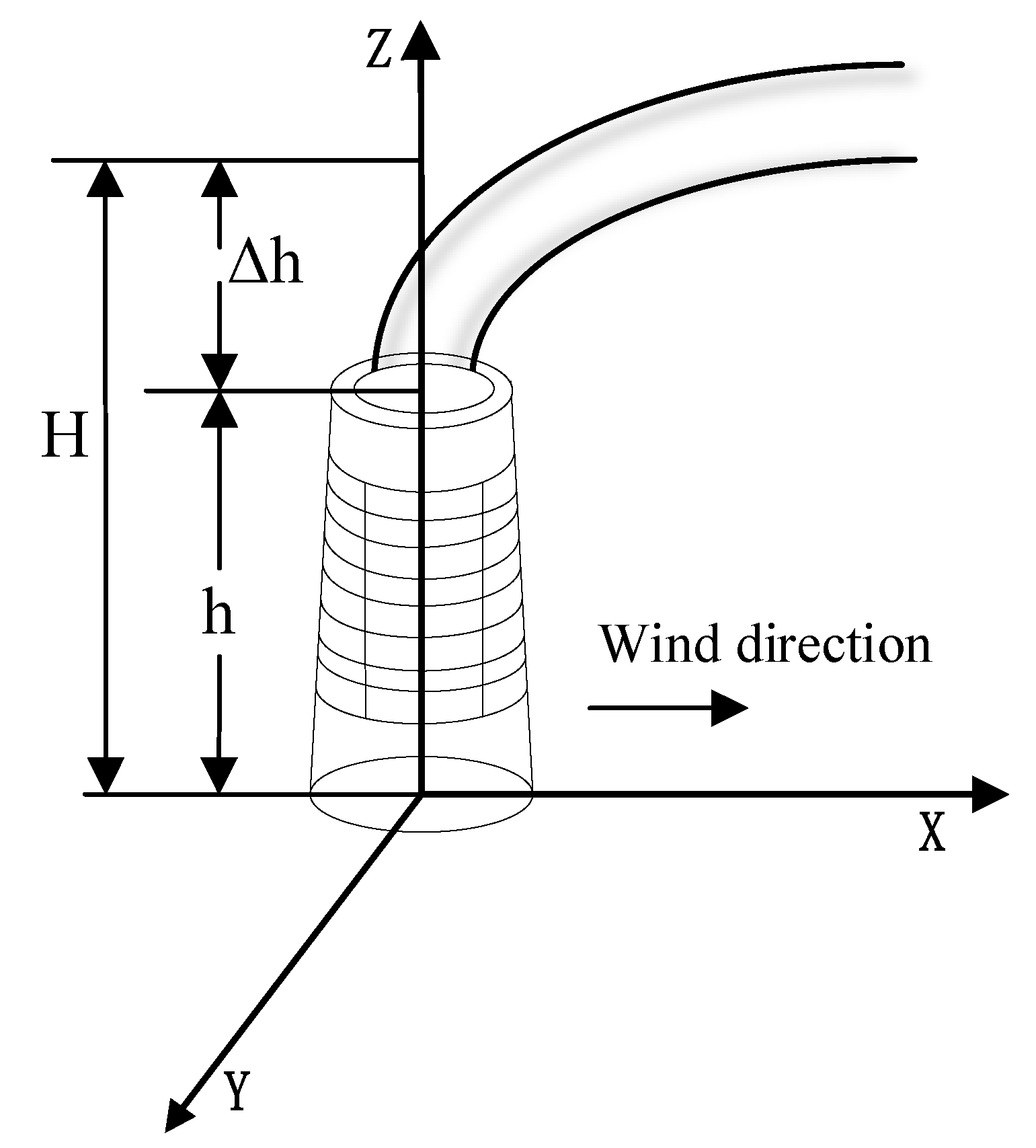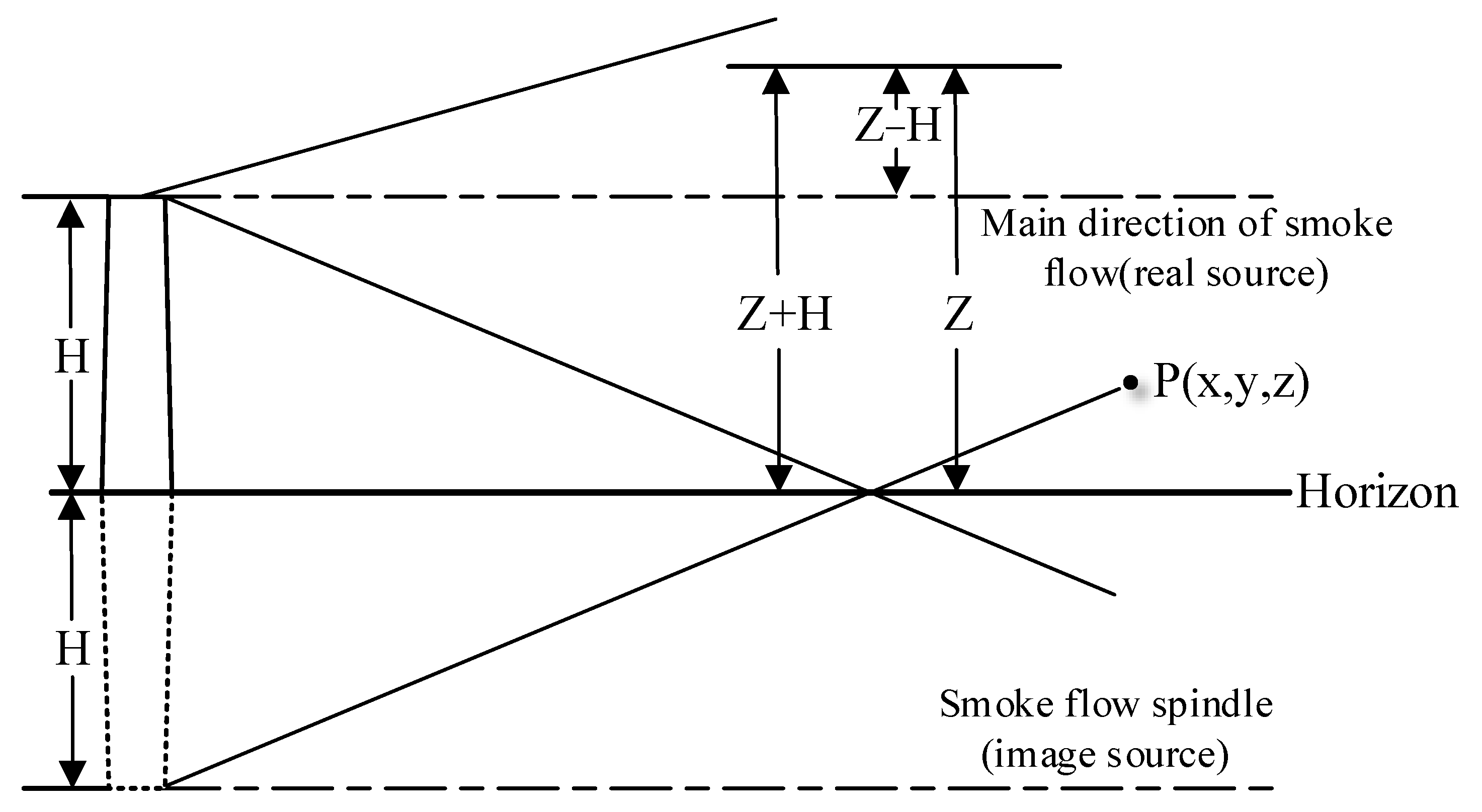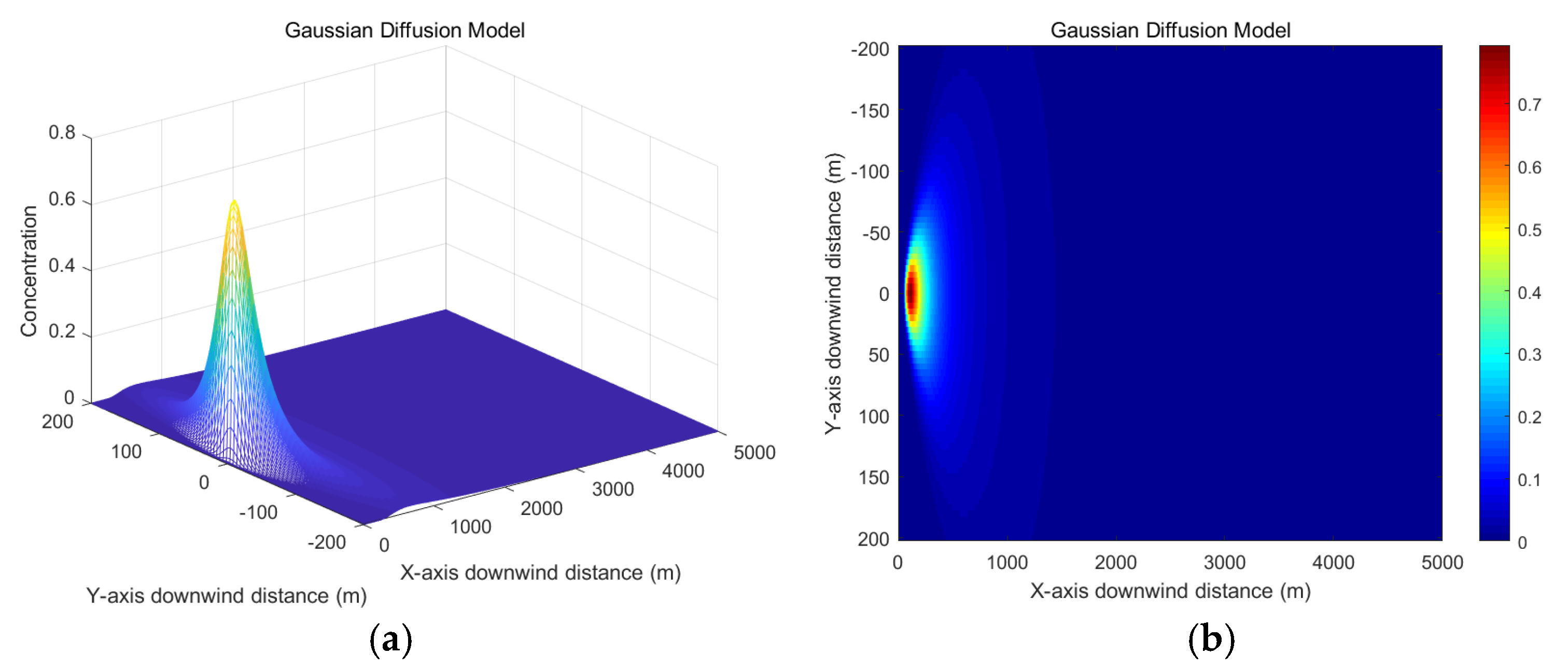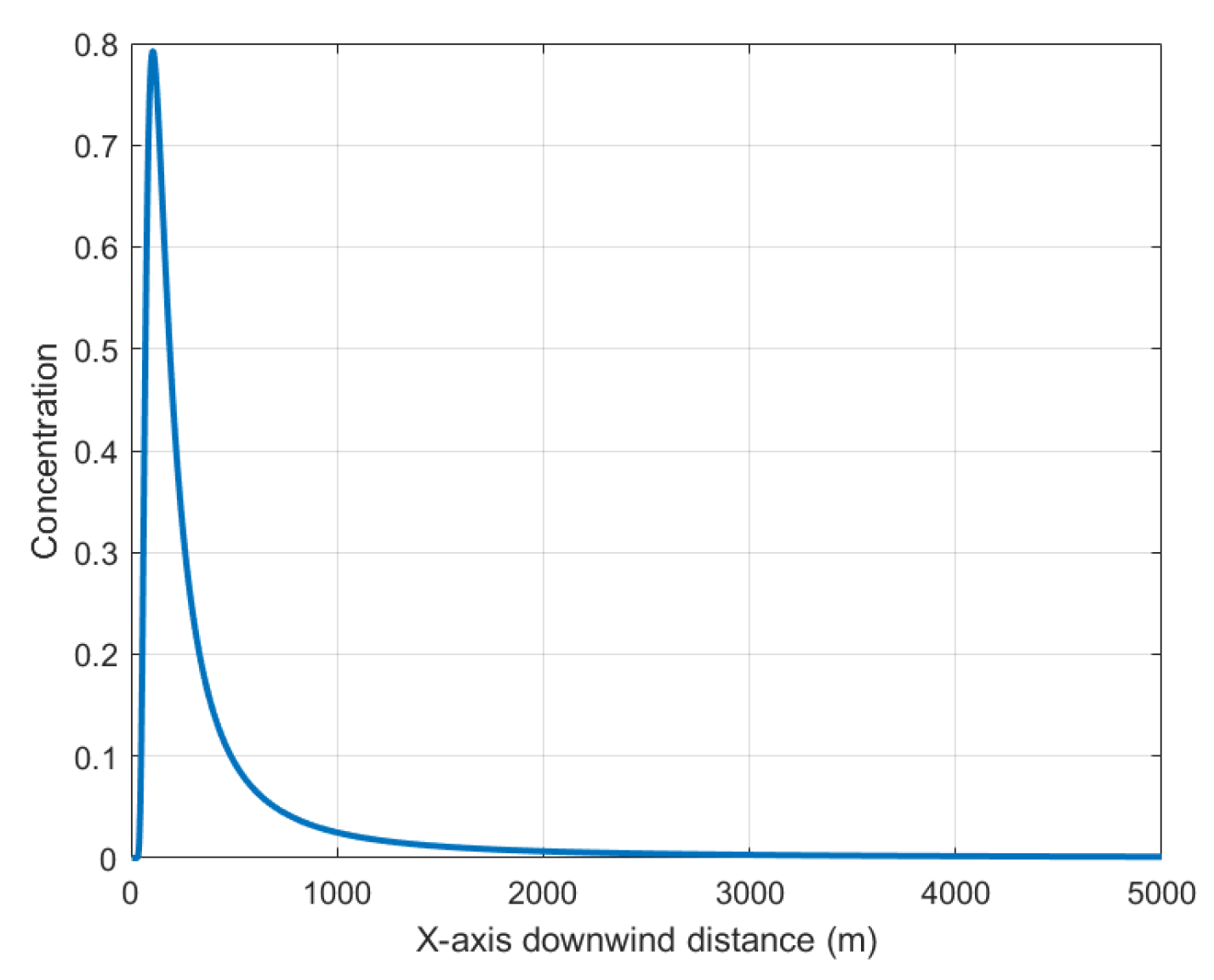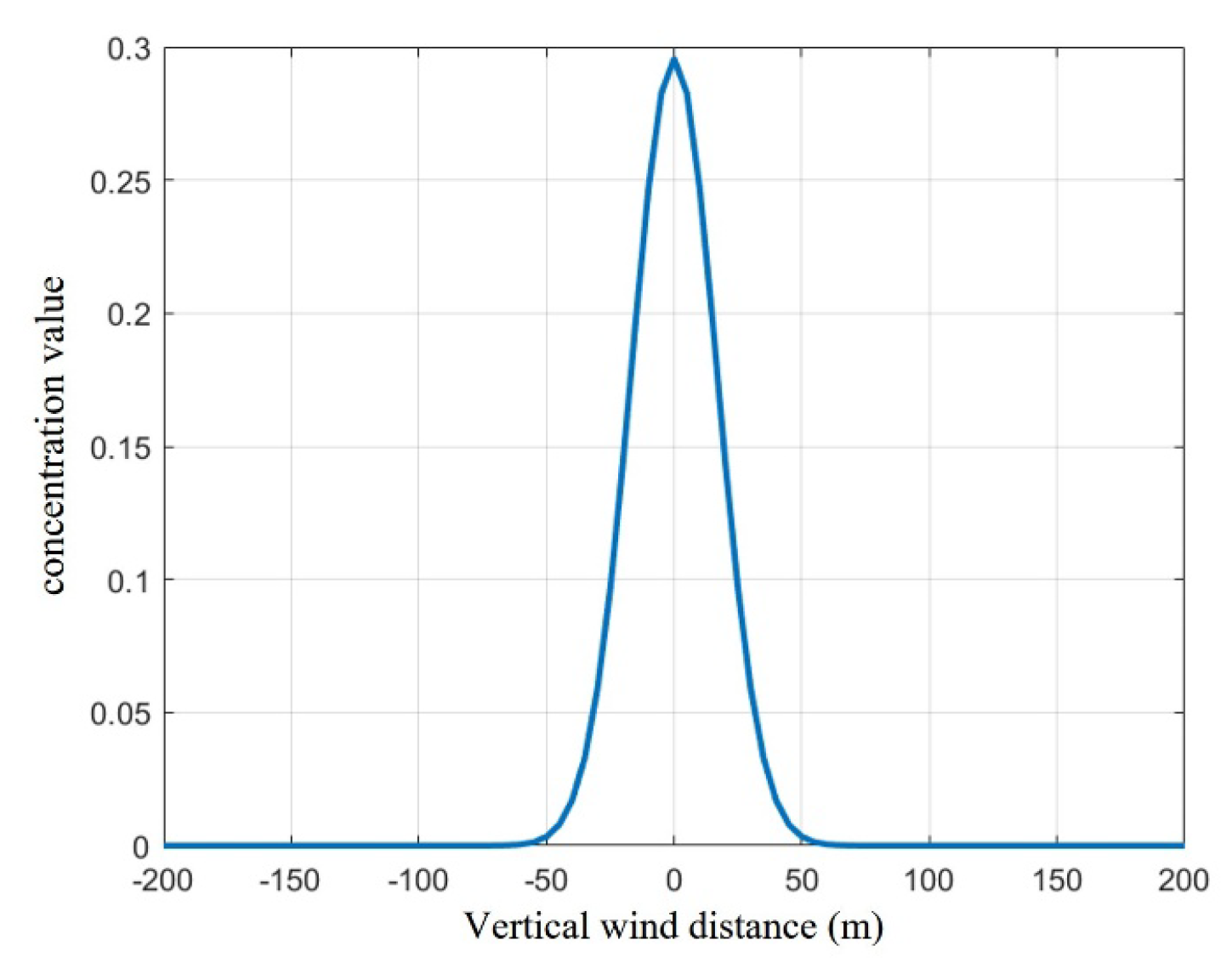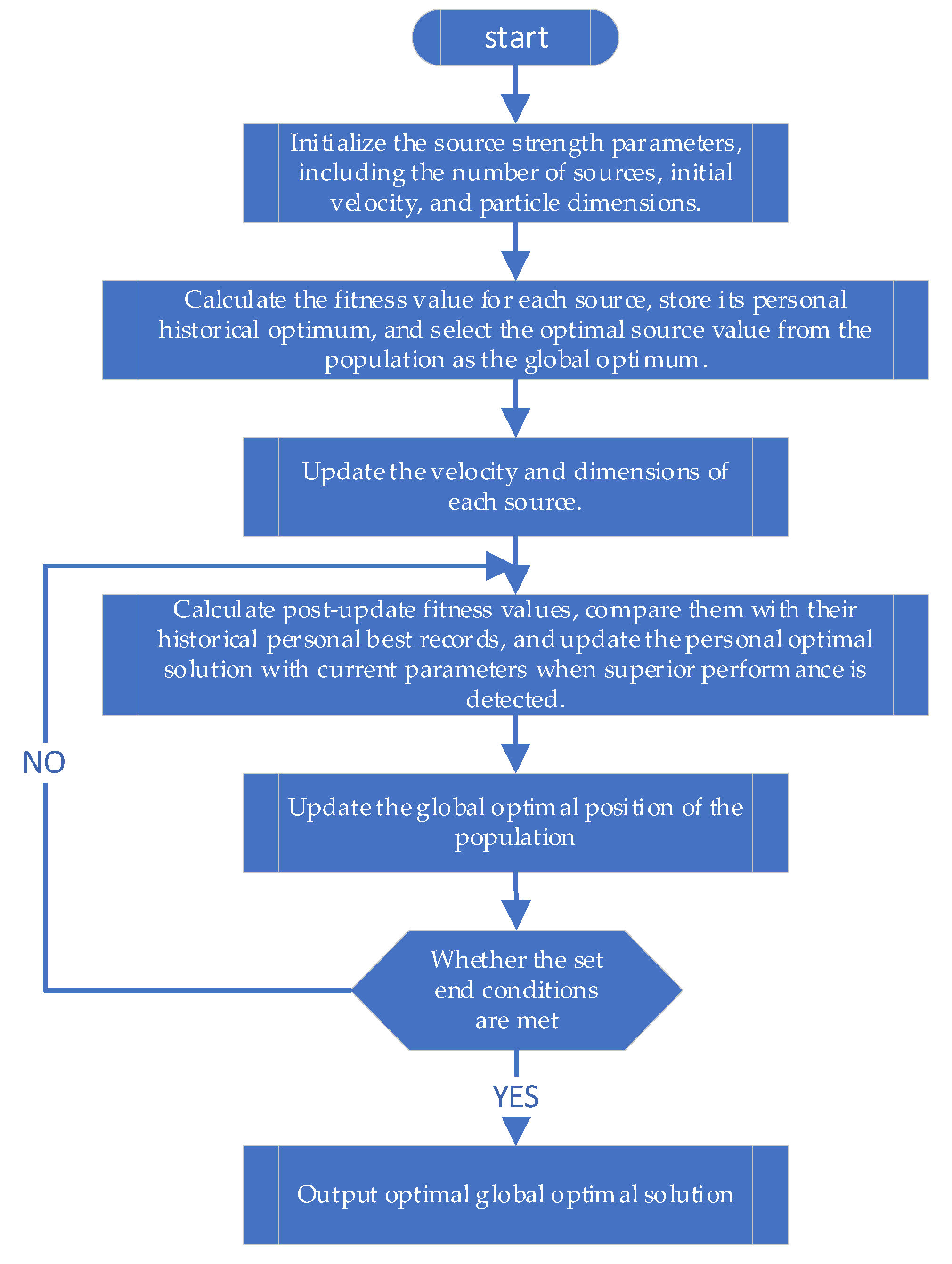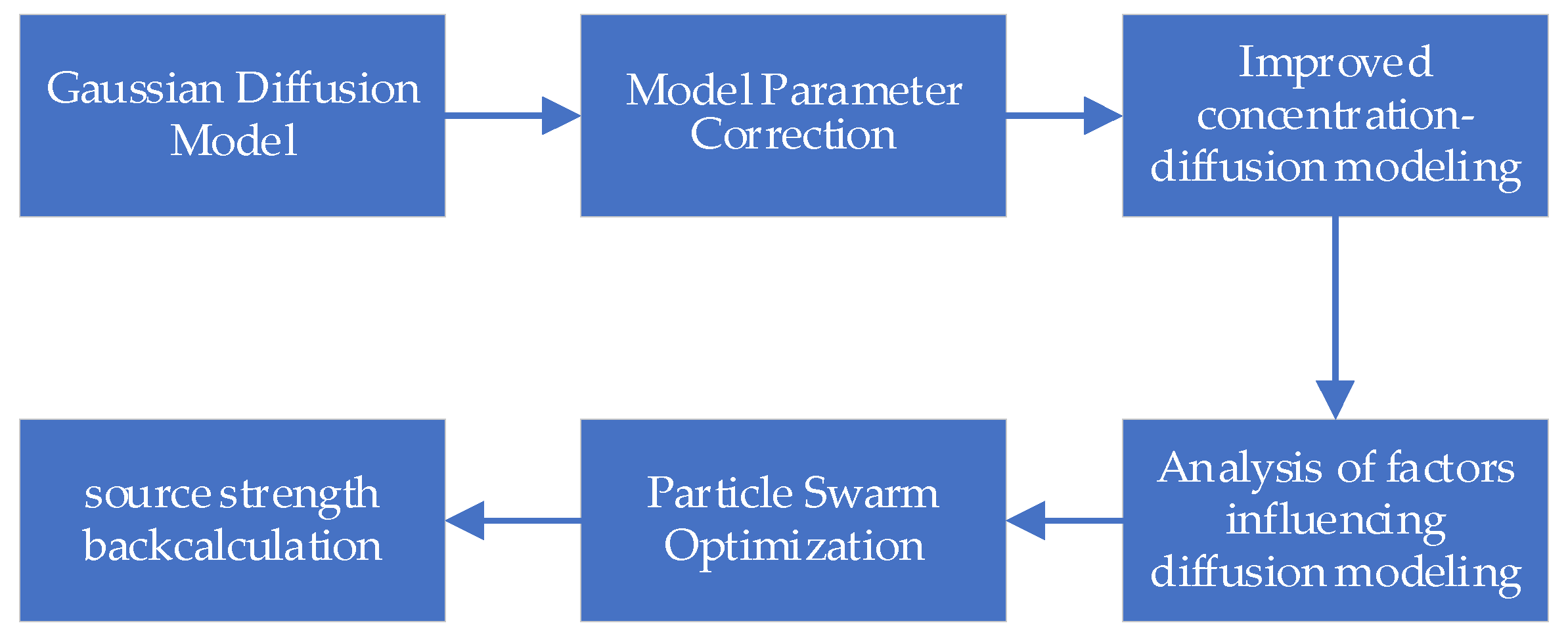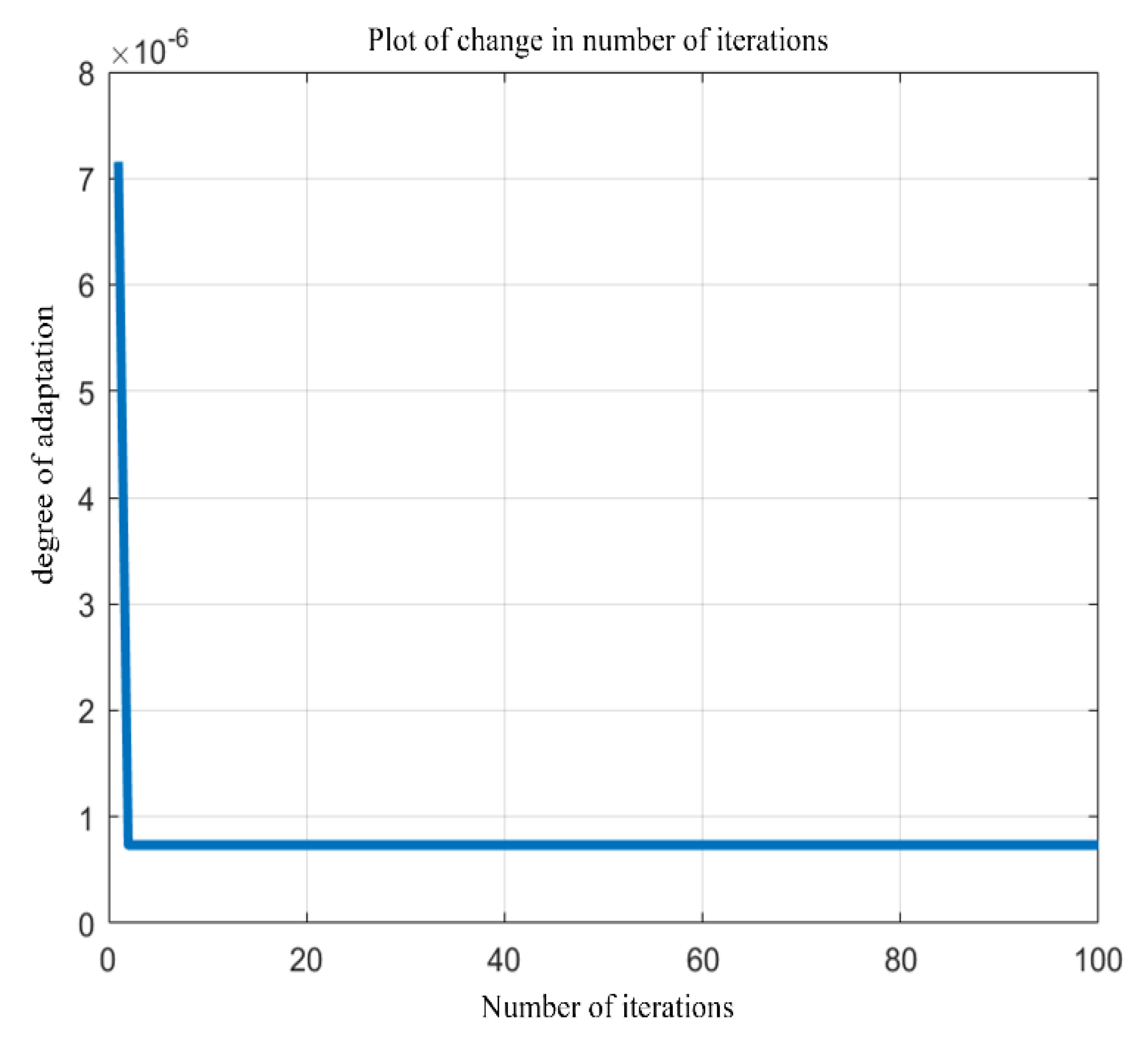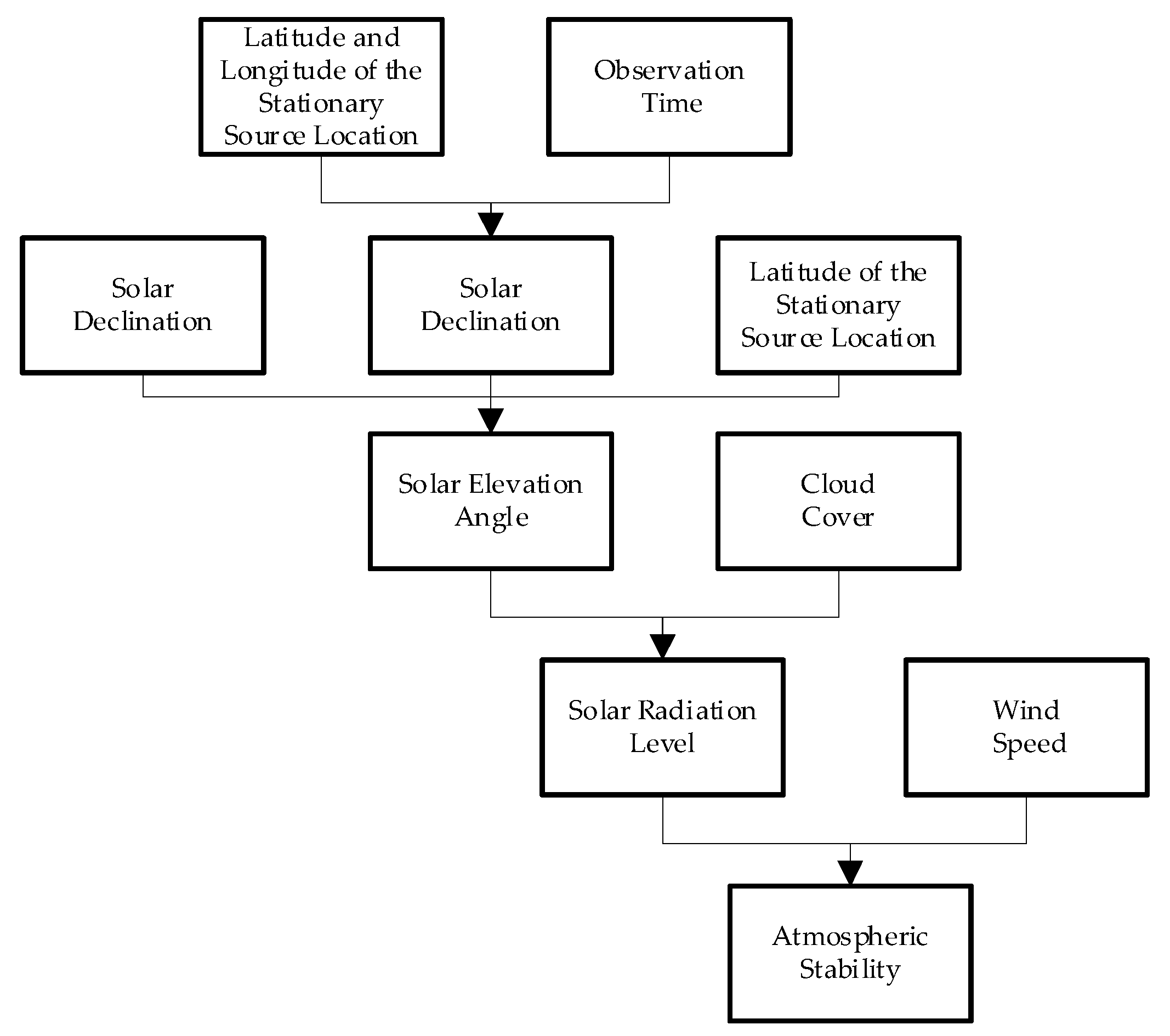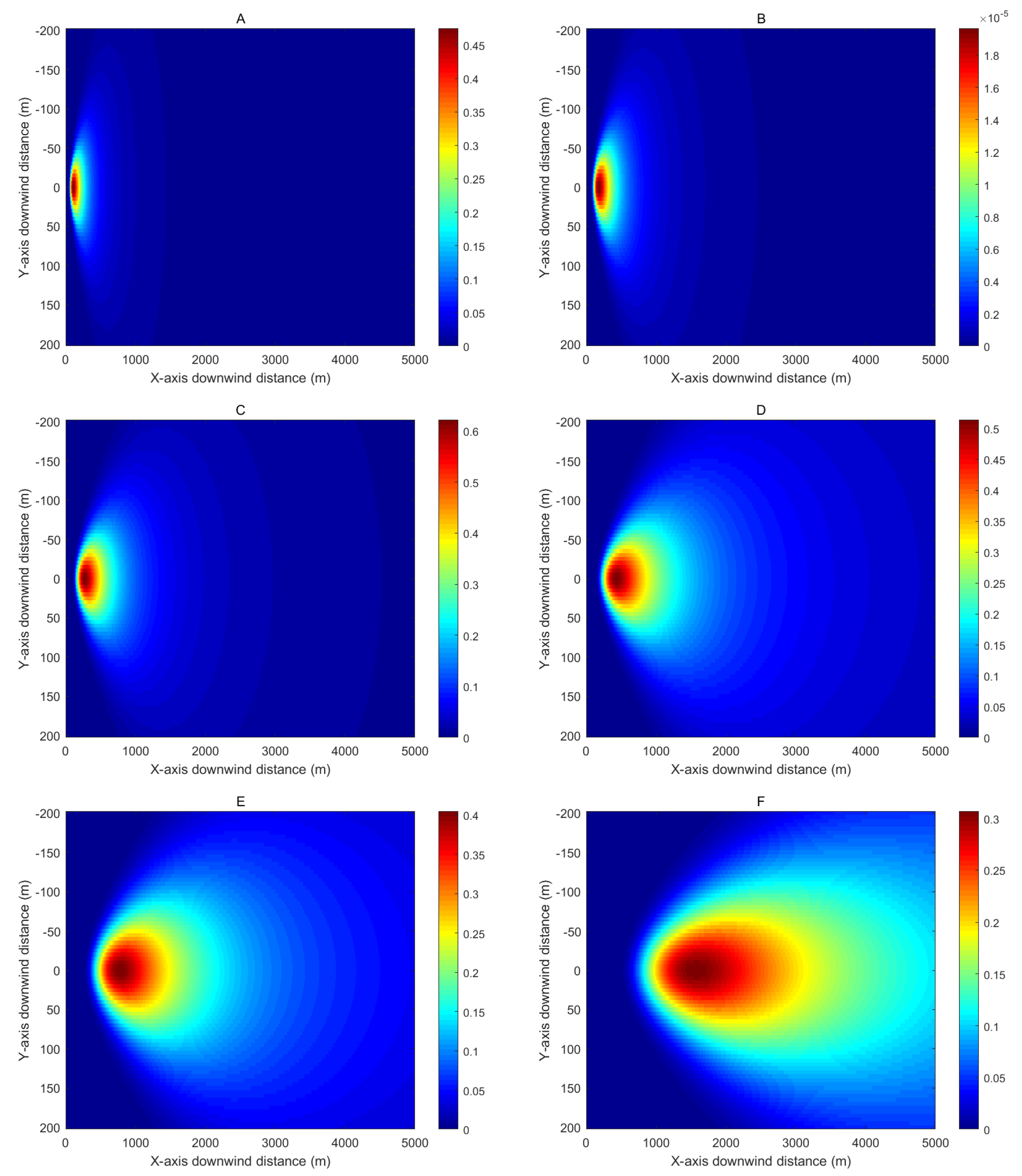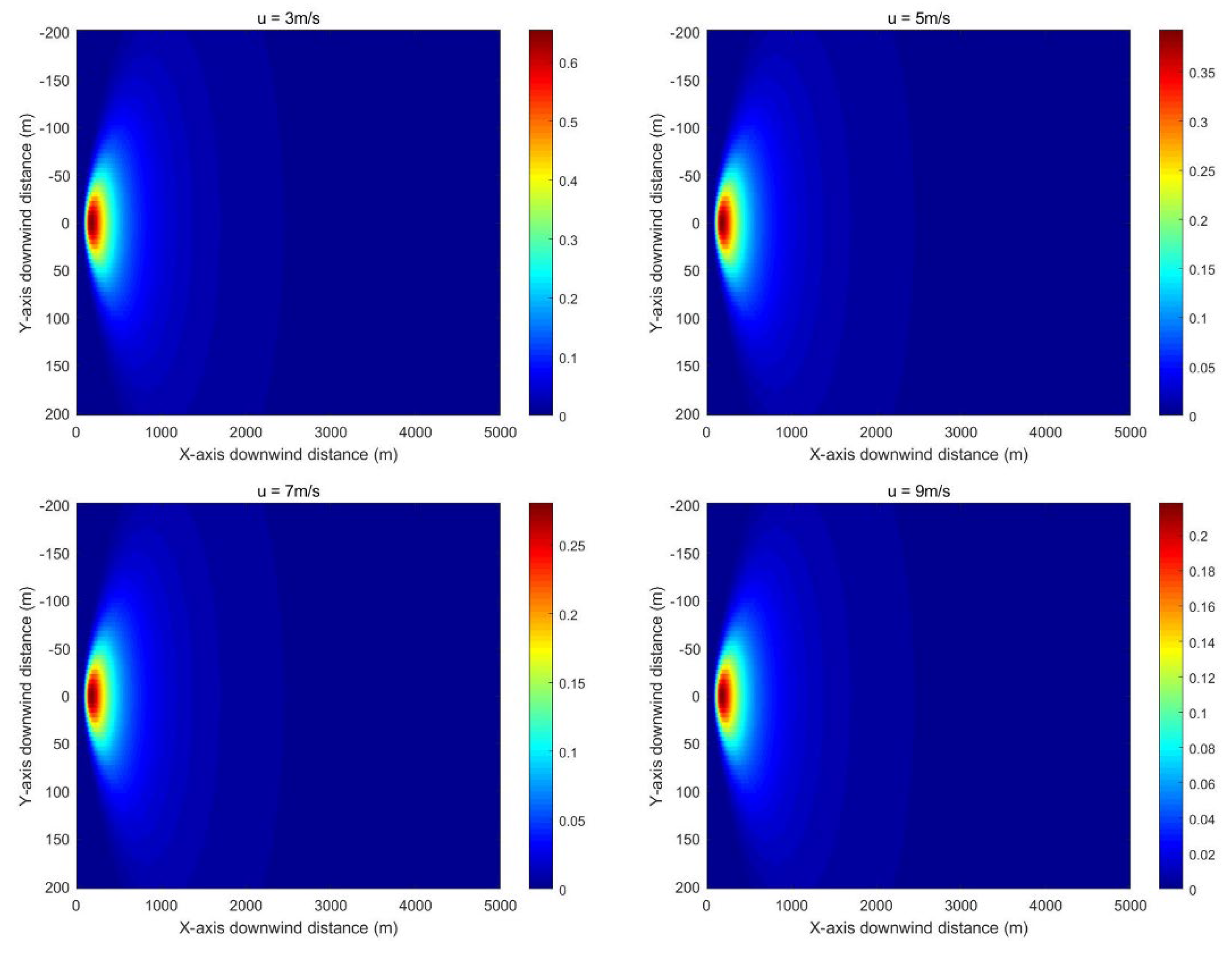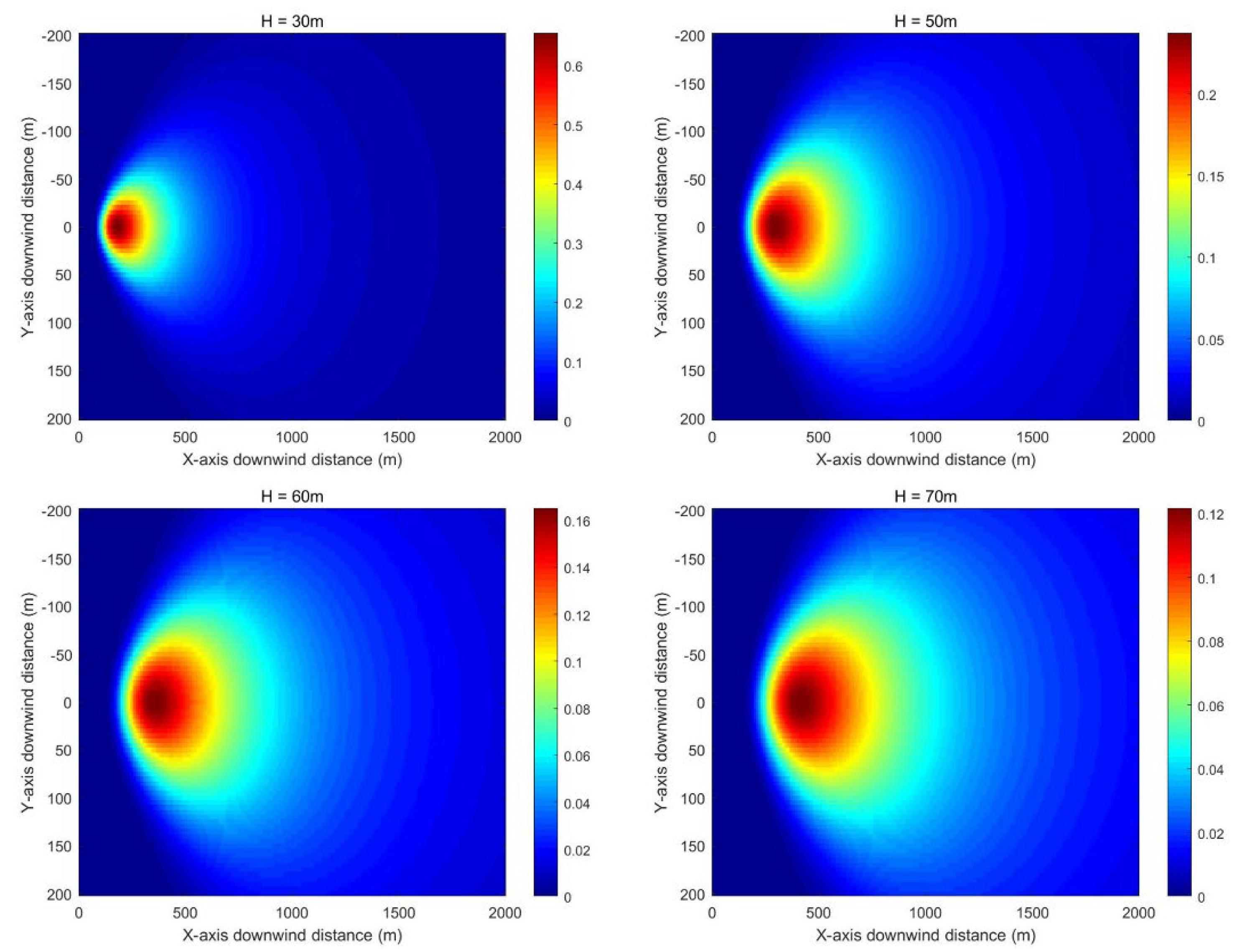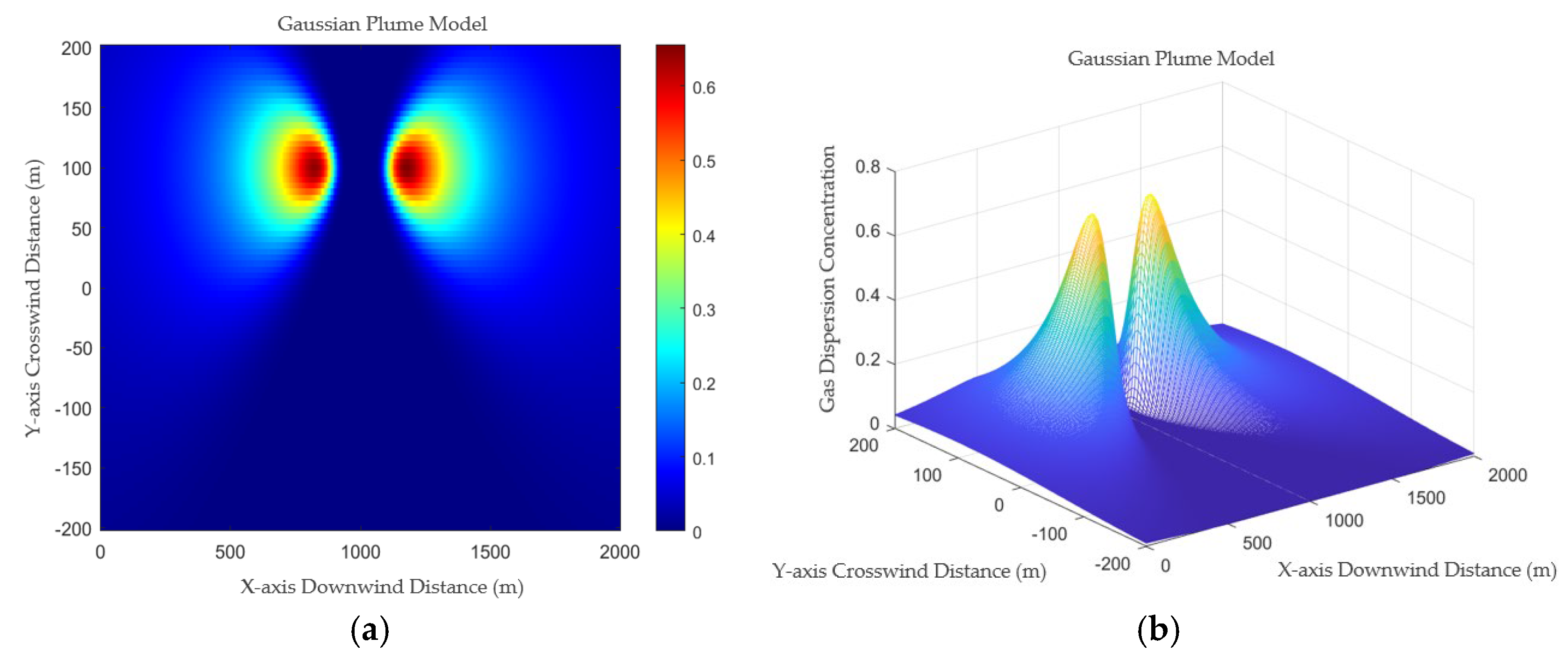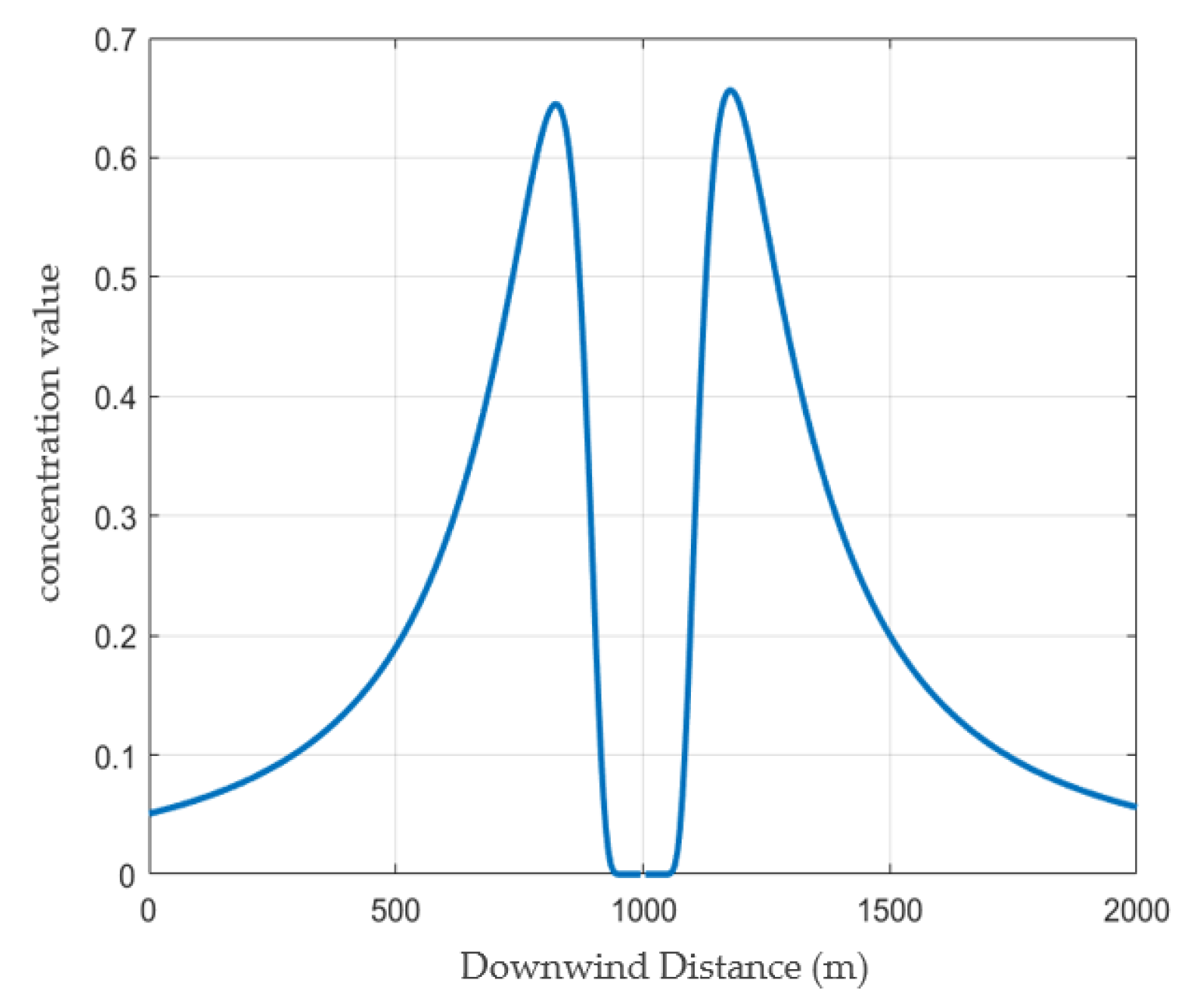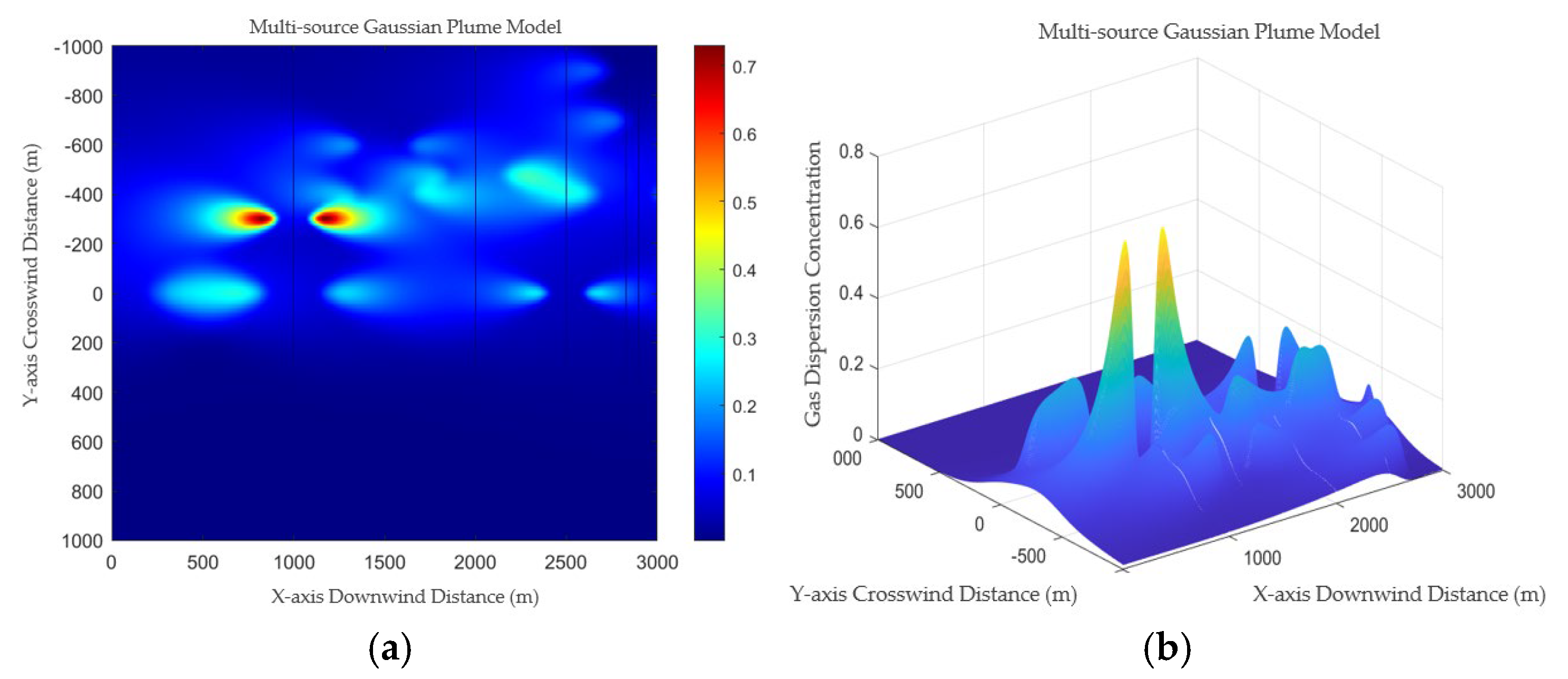2.1. Stationary-Source CO2 Dispersion Model and Its Optimization
Carbon dioxide emissions from stationary sources are emissions from planned and designed stationary sources at industrial facilities or from other human activities. In the case of thermal power plants, stationary-source emissions are defined as the regular emission of carbon dioxide into the atmosphere from fixed exhaust outlets such as stacks and the exhaust stacks of production units [
23]. The model predictions and field measurements are also compared, as shown in
Table 1.
The Gaussian plume model is a commonly used gas diffusion model that can be used to simulate the diffusion and concentration distribution of gaseous pollutants in the atmosphere. It is suitable for small- to medium-scale use and uniformly continuous emission sources. Assuming that the carbon dioxide emission source is an elevated point source, the carbon dioxide emission from the elevated point source of a thermal power plant is simulated and predicted based on the Gaussian plume model [
23]. The following conditions need to be met for the Gaussian smoke plume model to be used:
Uniform and stable wind speed and direction in the region;
The source strength is uniformly continuous and consistent;
Atmospheric stability is described through stability categories (e.g., A, B, C, D, etc.);
The gas concentration distribution on the Y- and Z-axes satisfies a Gaussian distribution.
Under these conditions, we employ the Gaussian plume model to simulate CO
2 concentration distribution, assuming a homogeneous medium and constant emission rate. The estimation of carbon dioxide dispersion is achieved by calculating propagation ranges in vertical and horizontal directions from fixed emission sources, while incorporating factors including emission rate, wind speed, and stability categories. The fixed source is defined as the coordinate origin with the positive X-axis aligned with the downwind direction [
24]. The Y-axis is perpendicular to the X-axis in the horizontal plane (positive direction to the left of the X-axis), and the Z-axis extends vertically upward from the horizontal plane, as illustrated in
Figure 1.
Stationary sources are generally elevated point sources where the point source is located high above the ground surface; since the dispersion of pollutants in the vertical direction is affected by the ground, this ground effect needs to be taken into account through boundary conditions. Therefore, mirror sources [
25] are introduced to satisfy the boundary conditions, as shown in
Figure 2.
The real source contribution value is
by the mirror method [
26]:
The reflected image source contribution is
:
Actual concentration
:
where
is the concentration of pollutant at any point in space (g/m
3);
is the source strength of CO
2 emissions from stationary sources (g/s);
is the wind speed (m/s);
is the diffusion coefficient in the upwind direction in the horizontal direction (m);
is the diffusion coefficient in the upwind direction in the vertical direction (m); and
is the height of CO
2 emission source (m).
The effective height of the actual CO
2 emission source
consists of the stack height
and the flue gas lift height
and is calculated using the following formula:
The height of flue gas lift has a significant effect on CO
2 diffusion, and the equation is as follows:
where
is the concentration of pollutants (g/m
3);
is the inner diameter of the chimney outlet (m);
is the temperature of the flue gas outlet (K);
is the average temperature of the ambient atmosphere (K);
is the heat emission rate of the chimney (KW); and
is the average wind speed at the chimney outlet (m/s).
Plume rise height is also influenced by atmospheric stability. Plumes tend to rise more readily under unstable conditions, while plume rise may be constrained under stable or temperature inversion conditions. These factors must be incorporated when applying Gaussian dispersion models to ensure that prediction results closely approximate real-world scenarios [
27]. This demonstrates that calculating plume rise height is computationally intensive and challenging; therefore, empirical formulas can be considered to simplify the calculations. The specific methods are summarized in
Table 2.
When z equals 0, it is considered to represent the ground-level CO
2 concentration within the industrial park. For CO
2 or any gaseous pollutant, ground-level concentration serves as the most direct and critical indicator for assessing their impacts on human activities and environmental effects at the surface. The ground-level CO
2 concentration distribution across the industrial park can be derived as follows:
Similarly, when y = 0 and z = 0, this represents the pollutant concentration distribution along the central axis downwind of the stack at ground level. Analyzing this scenario allows for the evaluation of maximum ground-level concentrations at the downwind locations most likely to expose human populations to the pollutant, providing data support for pollution prevention and control measures in industrial parks. The calculation formula for ground-level axial gas concentration is expressed as follows:
A simplified simulation of the stationary-source CO
2 dispersion model is implemented in MATLAB, with the source strength set to 10,000 g/s, effective stack height to 30 m, and wind speed u to 3 m/s. The simulation yields the results shown in
Figure 3.
An analysis of the effects of downwind distance and vertical crosswind distance on concentration values in the Gaussian diffusion model is shown in
Figure 4 and
Figure 5, with carbon dioxide concentration units expressed in g/m
3. As the downwind distance progressively increases, the carbon dioxide concentration initially rises sharply, subsequently decreases gradually, and ultimately approaches zero at a certain distance. This pattern fundamentally reflects the process of wind-driven dispersion and dilution following carbon dioxide emissions from the source. The vertical crosswind distance profile exhibits a normal distribution, consistent with the Gaussian diffusion model’s assumption of symmetrical normal distribution in the crosswind direction. The maximum concentration is predicted at y = 0, with progressively diminishing values towards both lateral directions.
When wind speed is ≤1.5 m/s, the atmosphere approaches quasi-stagnant conditions characterized by pronounced instability. Under low-/no-wind conditions, the atmospheric dispersion of gaseous pollutants becomes significantly complex: CO
2 emissions may exhibit recirculation patterns and plume subsidence, while surface-level turbulence intensifies with heightened unpredictability. Substantial discrepancies between surface wind speed and effective stack exit velocity compromise dispersion modeling accuracy. Wind direction divergence between surface and stack exit levels, coupled with the absence of prevailing wind vectors, frequently occurs in low-wind regimes [
28]. These conditions invalidate the directional axis assumption fundamental to Gaussian dispersion modeling. Consequently, the conventional Gaussian model becomes inapplicable under calm-wind scenarios. Empirical formulas are typically employed for approximation in practical applications. This approach assumes isotropic horizontal dispersion from point sources, generating concentric equi-concentration contours around emission origins. Vertical dispersion is predominantly governed by atmospheric eddy diffusivity. Turbulent transport mechanisms observed under stable wind conditions provide analogies for estimating vertical CO
2 profiles in low-wind environments. The CO
2 dispersion pattern under calm-/micro-wind conditions can be approximated by Equation (9):
